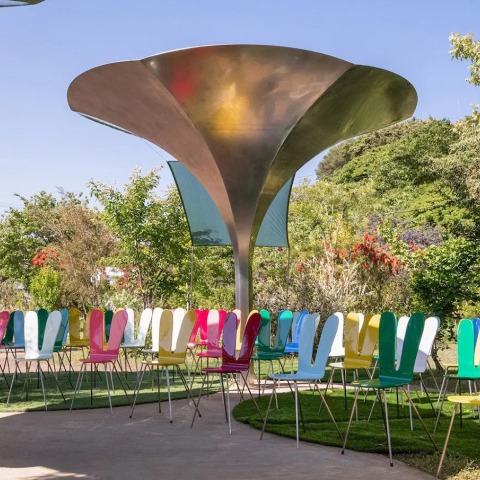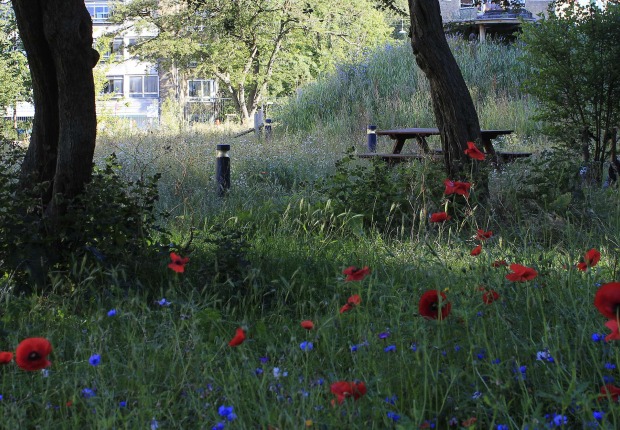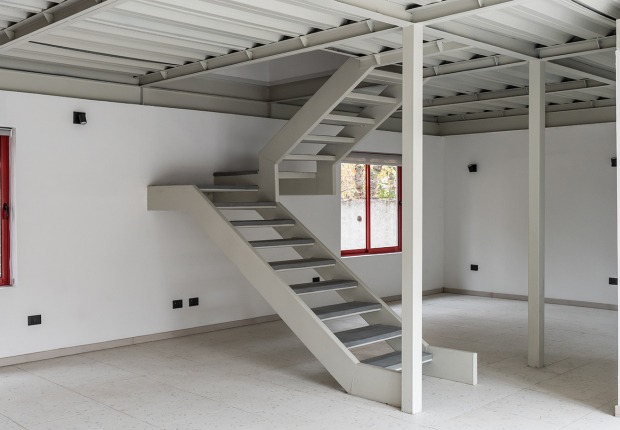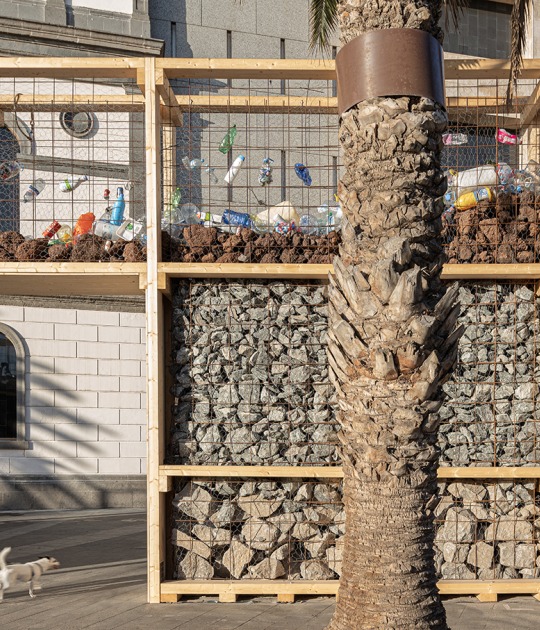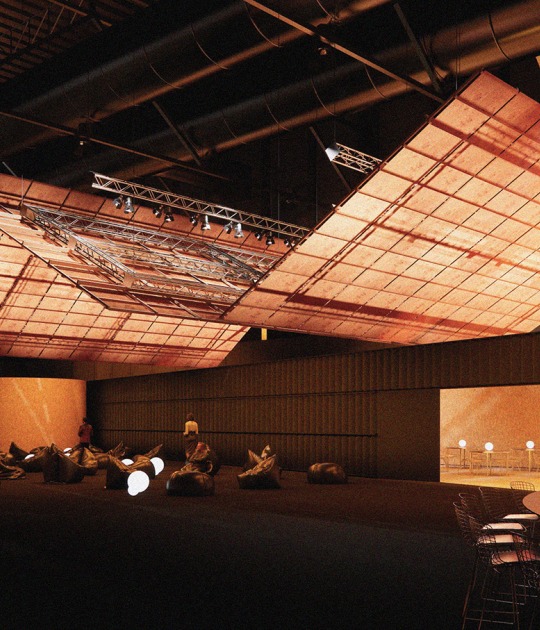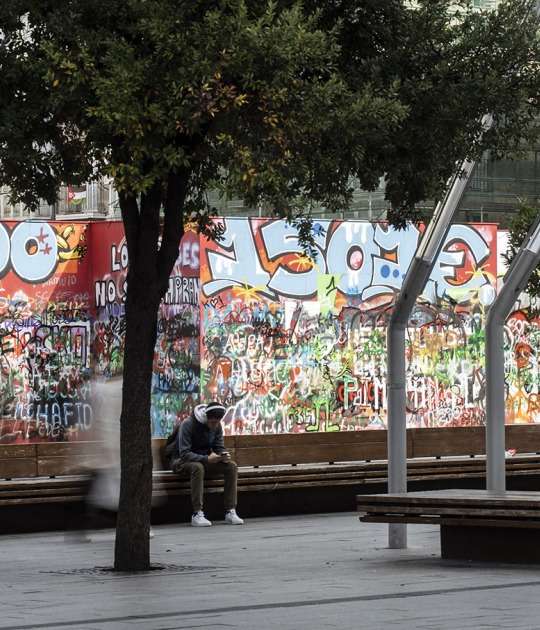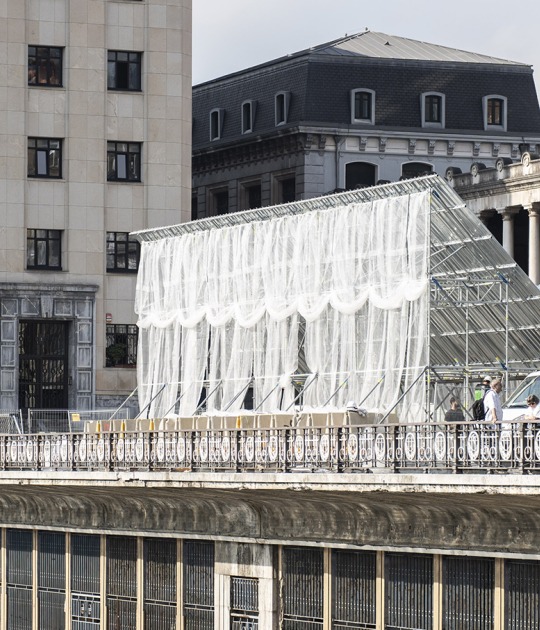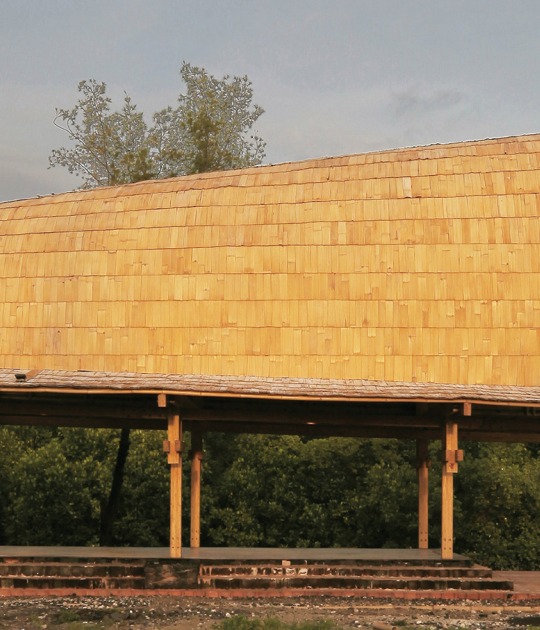The HANA ("flower") pavilion, designed by Japanese architect Kazuyo Sejima, features a lightweight structure that blends with the natural surroundings and a visually striking design that offers new experiences to visitors to the botanical garden. Prada presented HANA as a venue for talks and workshops at the Inujima Garden of Life. Ahead of the 2025 Setouchi Triennale (summer session from August 1 to 31 and autumn session from October 3 to November 9), we hope HANA will become a venue that makes the Garden of Life even more attractive to visitors from Japan and abroad, as well as to islanders.
HANA is a permanent pavilion in the Inujima Life Garden. It is composed of two flower-like structures that create a place where people can come together. The 3mm thick stainless steel plates were shaped on the mainland and transported to Inujima by ship, then welded and polished on-site. The finish gently reflects the surrounding vegetation, the sun's light, and the ever-changing scenery of the garden.

HANA Pavilion by Kazuyo Sejima. Photograph courtesy of Prada.
The Inujima Garden of Life, created by architect Kazuyo Sejima and the Akaruiheya Garden Design Unit, who moved to the island in 2016, has revitalized approximately 4,500 square meters of land around a disused glass greenhouse, transforming it into a botanical garden rooted in Inujima's natural environment and culture.
This is not a conventional botanical garden, professionally designed for people to visit and observe plant life, but rather a place where island residents and visitors can participate in the process of land revitalization and enjoy self-sufficiency in areas ranging from food to energy, experiencing the joy of living within the cycles of nature.
While learning from island residents about how to harness the power of nature and vegetation in daily life, the garden seeks, through workshops and various activities, to create environments and spaces to experience all that plants can offer, from food to fragrance, education, and recreation. In the Inujima Garden of Life, island residents and visitors can relax and learn from each other, reflecting together on the lifestyles of the future.

HANA Pavilion by Kazuyo Sejima. Photograph courtesy of Prada.
A copper refinery opened on the island in 1909, but it closed in 1919. The brick refinery remained virtually intact and, starting in 2008, became the centerpiece of a large-scale art project designed to stimulate tourism to the island.
The Inujima Art Project is an island-wide rehabilitation project led by the Naoshima Fukutake Art Museum Foundation, a project of Benesse Corporation that opened to the public in April 2008. The first phase of the project involved converting the former Seirensho Refinery into a model of contemporary architecture and art for recycling Japanese industrial heritage.
